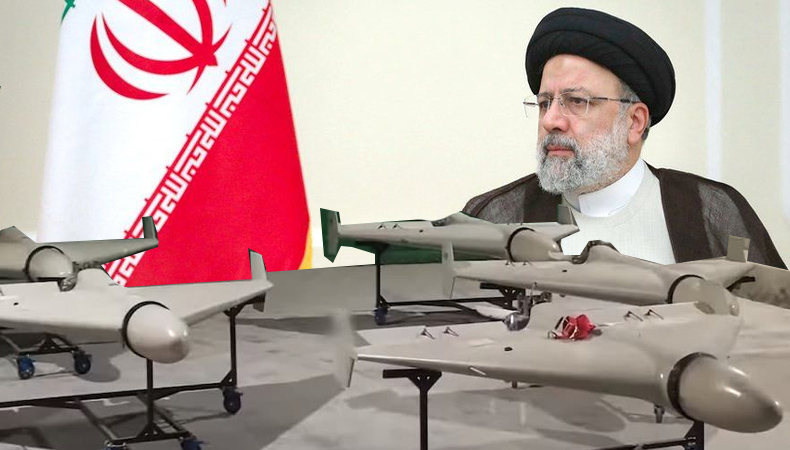Iran’s Defense Exports Surge Amid Growing Ambitions and Controversies

According to reports, Iran has significantly increased its defence exports, signalling a step up in its efforts to become a regional defence behemoth. The disclosure, which was made by Iranian pro-regime media, was made concurrently with a another report that said Russia was attempting to mass produce Iranian drones. Particularly concerning the use of its kamikaze drones in battle, Iran’s expanding defensive capabilities have drawn attention.
Russia has used the Iranian Shahed 136 kamikaze drone, which has a striking range of more than 1,000 kilometres, in its operations, upsetting Ukrainian citizens. While Western countries, led by the US, call on Russia to stop using these Iranian drones, Iran’s defence ministry has clarified that it wants to establish itself as a significant participant in the region’s defence industry.
Reza Talaei-Nik, Iran’s deputy defence minister, underlined the value of military capabilities throughout history by pointing to Iran’s susceptibility to invasions and territory losses during the poor defence. Iran has been making significant investments in creating domestic military goods, notably missiles and drones, to combat this. Due to its production capacity limits, Iran focuses on making affordable weapons like drones and missiles.
The nation’s dedication to defence goes beyond military hardware and includes outreach initiatives, as shown through diplomatic exchanges with Saudi Arabia. Iranian efforts to become self-sufficient in the defence sector seek to protect national security and independence. This motivation has resulted in significant investments in domestic manufacturing, allowing Iran to transition from a reliance on foreign defence supplies to an independent force.
Keep Reading
Interestingly, the growth of Iran’s defence industry has also impacted the country’s civilian industries, producing almost 2,000 goods for the market. This diversification offers Iran a strategic advantage since it allows it to invest money from the lifting of sanctions in the defence sector while purportedly promoting civic growth. This nexus between the military and civilian sectors is consistent with Iran’s goal of integrating cutting-edge technology with brutal force and soft power to satisfy its diverse demands.
Concerns have been raised about Iran’s financial gains from releasing hostages and prisoners, with claims that billions are being diverted to the weapons sector. Iran wants to increase its defence exports not just to Russia but also globally despite demands from other countries to stop exporting drones. Iran can improve its export potential by developing its defence industry.
Iran demonstrates its commitment to innovation by pursuing hypersonic cruise missiles as it works to improve its missile, drone, and air defence capabilities. The nation’s expanding defence capabilities are seen as a way to accomplish its strategic objectives regarding influence and security. The ramifications of its defence exports and the use of money intended for humanitarian causes are two issues raised by this increase, though.
In conclusion, Iran’s rapidly expanding defence capabilities and exports reflect its desire to make a local and international statement. This endeavor, which is motivated by the creation of domestic products and technologies, is entangled with civilian industries, creating a complex web of strategic issues and disagreements on a global scale.







